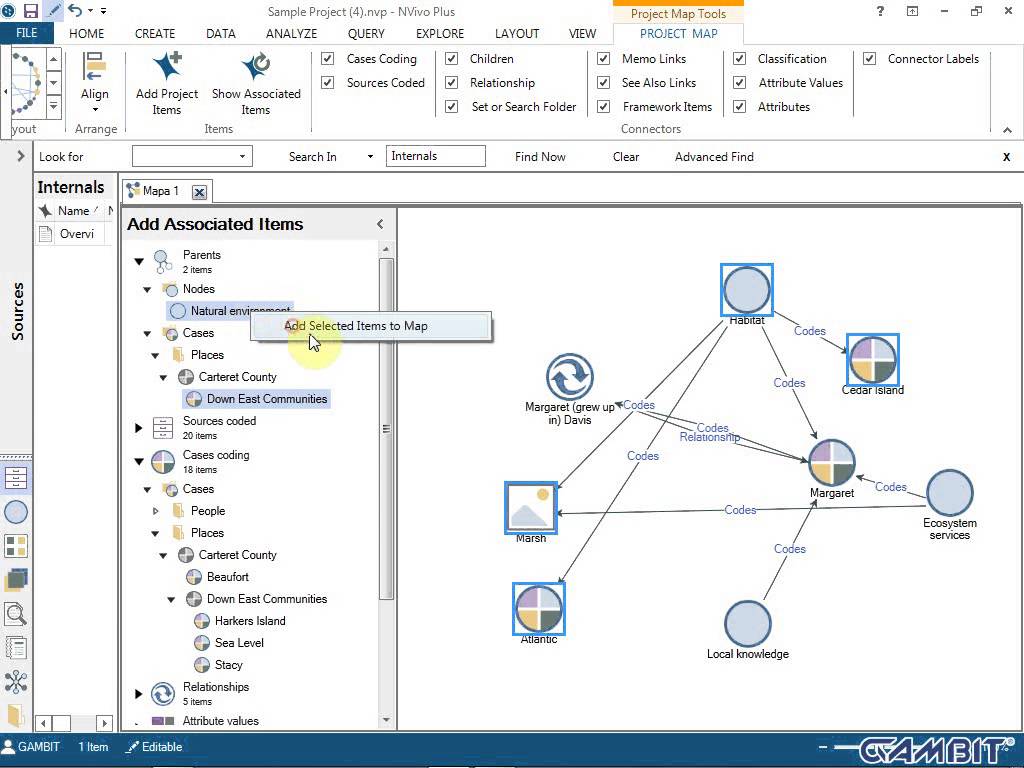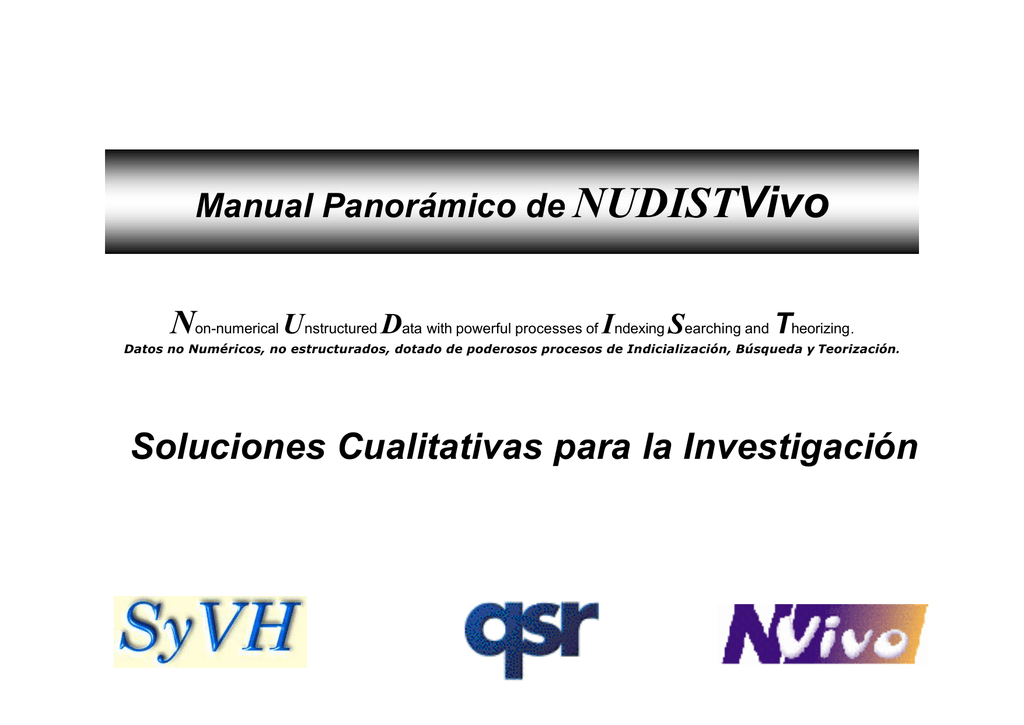Introduction to NVivo 1. Introduction to NVivo Louise Annis and Marieke Guy QAA Scotland visit Wednesday, 25th January 2017 2. Nvivo is a piece of software that supports qualitative and mixed method research. It will help you organise, analyse and find insights in unstructured data. It allows you to ask questions of your data. For more information about working with NVivo refer to:. NVivo Help—on the menu bar, choose Help NVivo Help. The QSR website (www.qsrinternational.com)—access video tutorials, the QSR forum, FAQs, training and support. The NVivo blog covering issues, trends and best practice in qualitative and mixed methods research. Automatic coding in documents. You can autocode document, memos and externals based on paragraphs or paragraph styles. If you are working with structured documents (like interviews that ask the same set of questions) then autocoding can help you to organize the material into codes for further exploration. NVIVO 12 INTRODUCTION. Sample project: Environmental Change Down East. The sample project that accompanies NVivo for Windows, Environmental Change Down East, is an actual study conducted by theNicholas School of Environment at Duke University. The study investigated coastal communities in what had been a remote area of North Carolina.
About coding

A code in qualitative research is a word or phrase that summarises or captures the essence of a portion of data.
Coding is the analytical process of categorising data.

In NVivo, coding is the process of gathering related material into a container called a Node. When you open a node, you can see all the references in the project coded to the node.

There are several types of codes in NVivo. Theme nodes are codes that represent the themes or topics that you find in your data. Relationships record the connection between two project items. Sentiment codes are positive and negative nodes created by auto coding of sentiment.
NVivo supports deductive (pre-set coding scheme, often based on emerging themes from a literature review) and inductive (codes generated while examining the collected data) approaches to coding.
How to code in NVivo
Deductive coding
If you are taking a deductive approach, you will have a list of pre-defined codes and want to create nodes for these and then code your sources to the relevant node.
To create a New Node:
- From the Create tab, select Node.
- In the New Node dialog box, enter a Name and Description (optional) for the node. If the node name is very long, you can create a Nickname which will be shorter and quicker to use in the quick coding bar.
- To incorporate reference from child nodes within the parent node, select the Aggregate coding from children checkbox.
- Select a Color to specify the colour of coding stripes (optional).
- Click OK.
To code to an existing Node:
- Select the unit of text you want to code in the data file
- Click on the text, then drag and drop it over the required node.
Inductive coding
If you are taking an inductive approach to coding, you attach codes to units of data as you analyse your files. To do this in NVivo:
- Select Nodes in Navigation view.
- Select the unit of text you want to code in the source item, then drag and drop it into List View, over the prompt “Drag selection here to code to a new node”
- In the New Node dialog box, enter a name and description (optional).
- Click OK.
The following video demonstrates different ways of coding in NVivo:
Coding in NVivo 12 (Windows) by QSR International (YouTube)
About coding
A code in qualitative research is a word or phrase that summarises or captures the essence of a portion of data.
Coding is the analytical process of categorising data.
In NVivo, coding is the process of gathering related material into a container called a Node. When you open a node, you can see all the references in the project coded to the node.
There are several types of codes in NVivo. Theme nodes are codes that represent the themes or topics that you find in your data. Relationships record the connection between two project items. Sentiment codes are positive and negative nodes created by auto coding of sentiment.
NVivo supports deductive (pre-set coding scheme, often based on emerging themes from a literature review) and inductive (codes generated while examining the collected data) approaches to coding.
How to code in NVivo
Deductive coding

If you are taking a deductive approach, you will have a list of pre-defined codes and want to create nodes for these and then code your sources to the relevant node.
To create a New Node:

- From the Create tab, select Node.
- In the New Node dialog box, enter a Name and Description (optional) for the node. If the node name is very long, you can create a Nickname which will be shorter and quicker to use in the quick coding bar.
- To incorporate reference from child nodes within the parent node, select the Aggregate coding from children checkbox.
- Select a Color to specify the colour of coding stripes (optional).
- Click OK.
To code to an existing Node:
Nvivo 12 User Manual
- Select the unit of text you want to code in the data file
- Click on the text, then drag and drop it over the required node.
Inductive coding
If you are taking an inductive approach to coding, you attach codes to units of data as you analyse your files. To do this in NVivo:
- Select Nodes in Navigation view.
- Select the unit of text you want to code in the source item, then drag and drop it into List View, over the prompt “Drag selection here to code to a new node”
- In the New Node dialog box, enter a name and description (optional).
- Click OK.
Nvivo 12 Manual Instructions
The following video demonstrates different ways of coding in NVivo: